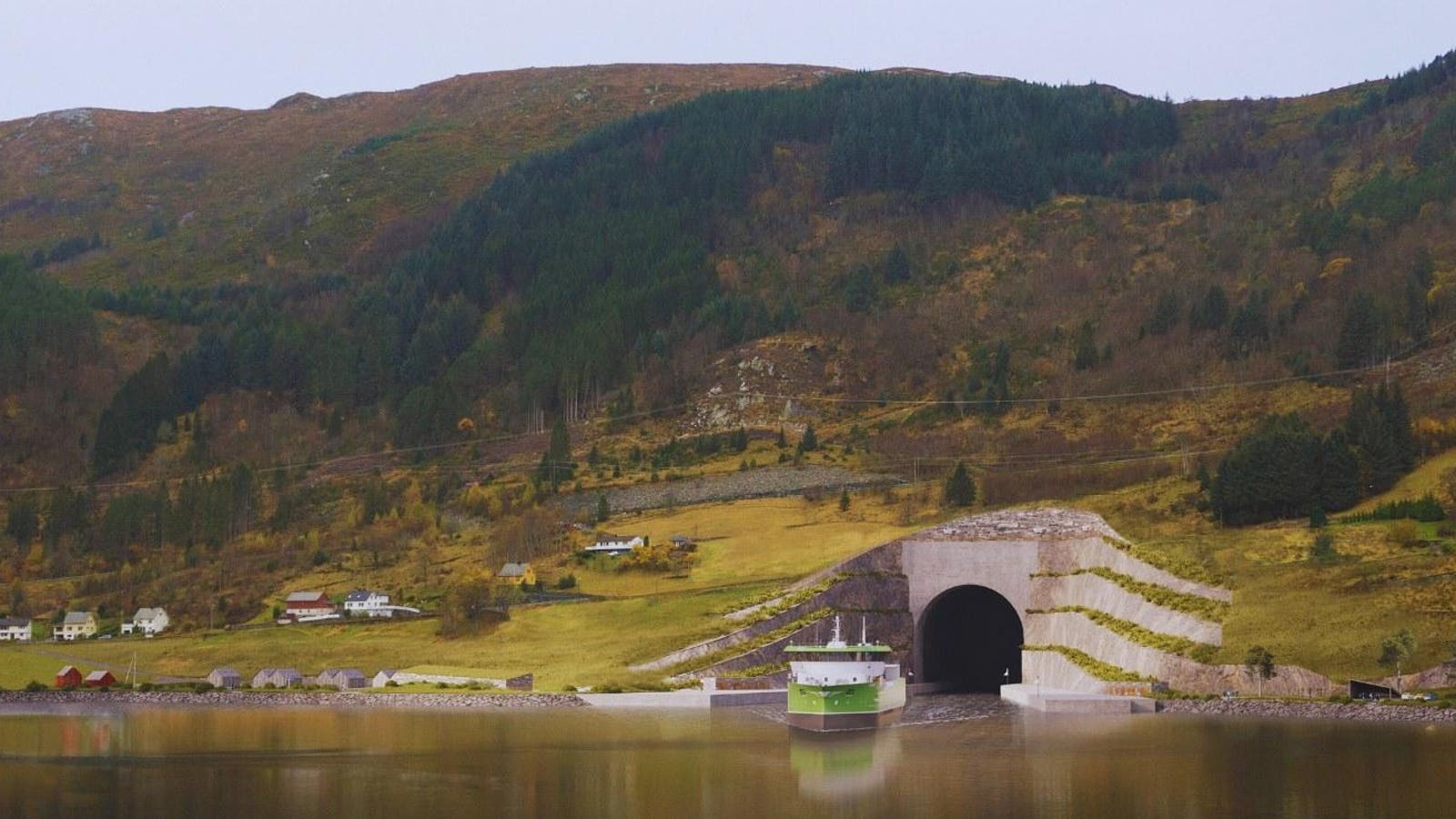Norway’s Stad Ship tunnel should take most ships appoximately ten minutes to pass through.
Kystverket / Multiconsult / LINK Arkitektur
Norway’s ambitious Stad Ship Tunnel will provide cargo and passenger vessels with a safe and efficient route through one of the most challenging stretches of the Norwegian coastline.
By bypassing the hazardous waters around the Stad peninsula, the tunnel will eliminate the need for navigating its frequently rough seas and powerful currents.
The Stad peninsula projects into the Norwegian Sea, creating treacherous conditions for maritime traffic due to its relentless weather and unpredictable currents. Norway’s innovative response? Carve a mile-long tunnel directly through the peninsula.
After years of little communication following the announcement of the sensational plans, the Norwegian Coastal Administration has now published the tender for the tunnel’s construction, with a pre-qualification deadline set for the end of January 2025.
If construction begins as planned in late 2025, it should be finished in time for an opening in 2030.
The Tunnel’s Tourism Potential
The Stad ship tunnel will not only be an impressive feat of engineering. It is also poised to become a major tourist attraction, particularly for those traveling on the Norwegian coastal route.
Visitors will likely flock to see this unique structure and experience passing through the world’s first full-scale ship tunnel.
Norway’s coastal ferries are the largest vessels that will be able to pass through the tunnel.
Kystverket / Multiconsult / Link Arkitektur
With an estimated speed limit of eight knots, it will take vessels approximately ten minutes to pass through the tunnel.
However, most cruise ships will be too big to navigate the tunnel. Instead, the tunnel will cater primarily to smaller vessels, including coastal ferries and other small passenger ships, offering an unforgettable journey through this innovative passage.
The tunnel’s entrances, designed by Snøhetta, will feature rough-hewn rock walls, walkways, and a road bridge to blend with the natural landscape and provide scenic viewpoints, potentially boosting local tourism too.
Proposed Cruise Regulations Highlight Challenges
Norway is proposing new restrictions on large cruise ships navigating hazardous waters during storms, potentially affecting off-season itineraries.
Set to take effect on July 1 if approved, the rules apply to passenger ships over 492 feet long, encompassing most modern cruise ships but exempting Norway’s coastal ferries like Hurtigruten and Havila, which are built for year-round operation in challenging conditions.
Under the proposal, large cruise ships must avoid high-risk coastal areas during storms with winds above 20 meters per second (about 45 miles per hour).
These restrictions highlight the dangers of Norway’s exposed waters and reinforce the Stad ship tunnel’s role as a safer, more reliable alternative, even though most cruise ships will be too big to benefit from it.
Economic Benefits For Cargo And Fisheries
While the Stad ship tunnel is a groundbreaking project for Norwegian travel, much of its economic benefit from the estimated $440 million project will come from its impact on cargo transportation.
For commercial shipping, the tunnel will mean safer deliveries, less waiting time, shorter transport times, and better quality retention of raw materials transported past Stad.
Fishing vessels, bilge well vessels, service vessels, and container ships will benefit daily from the tunnel.
In bad weather, fishing vessels are often unwilling to round the Stad peninsula to deliver goods, leading to increased wait times and catch deterioration, limiting delivery options and prices. The aquaculture industry, in particular, has lost income due to weather-related delays at Stad.
Mowi, the world’s largest fish farming company, has been a vocal supporter of the Stad ship tunnel. With one of the world’s largest salmon reception facilities on the north side of Stad and many fish farms south of Stad, Mowi sees the tunnel as a key to reducing delays and preserving the quality of its products.
Meanwhile, Rostein, a leading bilge well vessel company, reports that 20% of its vessels are delayed due to the weather conditions at Stad, further illustrating the tunnel’s potential impact.
From Road To Sea
A safer and more efficient sea route past Stad will not only benefit the fishing industry but also help shift cargo transportation from road to sea.
Today, much of Norway’s fresh fish exports are transported via trailers due to the challenges of navigating Stad. The ship tunnel will enable more reliable sea transport, reducing the burden on Norway’s congested road network.
The shift to sea transport will save operating costs, reduce wear and tear on roads, and lower emissions, aligning with Norway’s environmental goals.
With the seafood industry expected to grow significantly, the tunnel will play a vital role in supporting this expansion while mitigating the environmental impact of increased transportation.
MORE FROM FORBESForbesHow Mercy Ships Uses Cruise Ship Expertise To Provide AidBy David NikelForbesThe Pros And Cons Of Megaship Cruising In 2025By David NikelForbesHow Norway’s Stavanger Will Celebrate Its 900th Year In 2025By David Nikel
